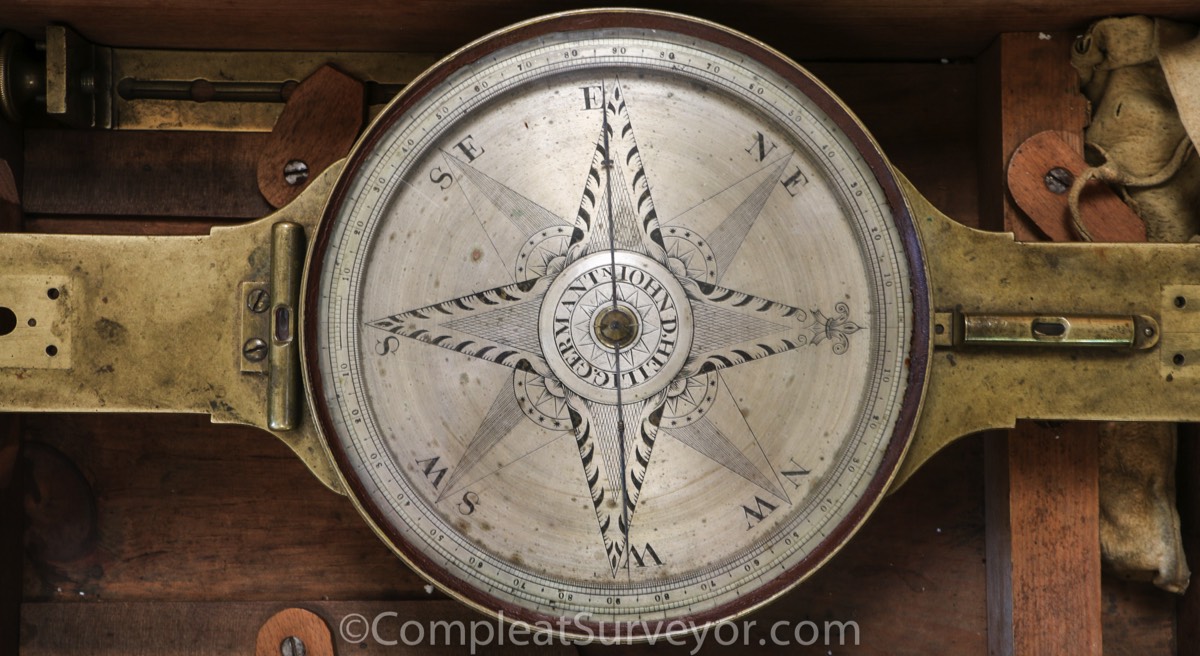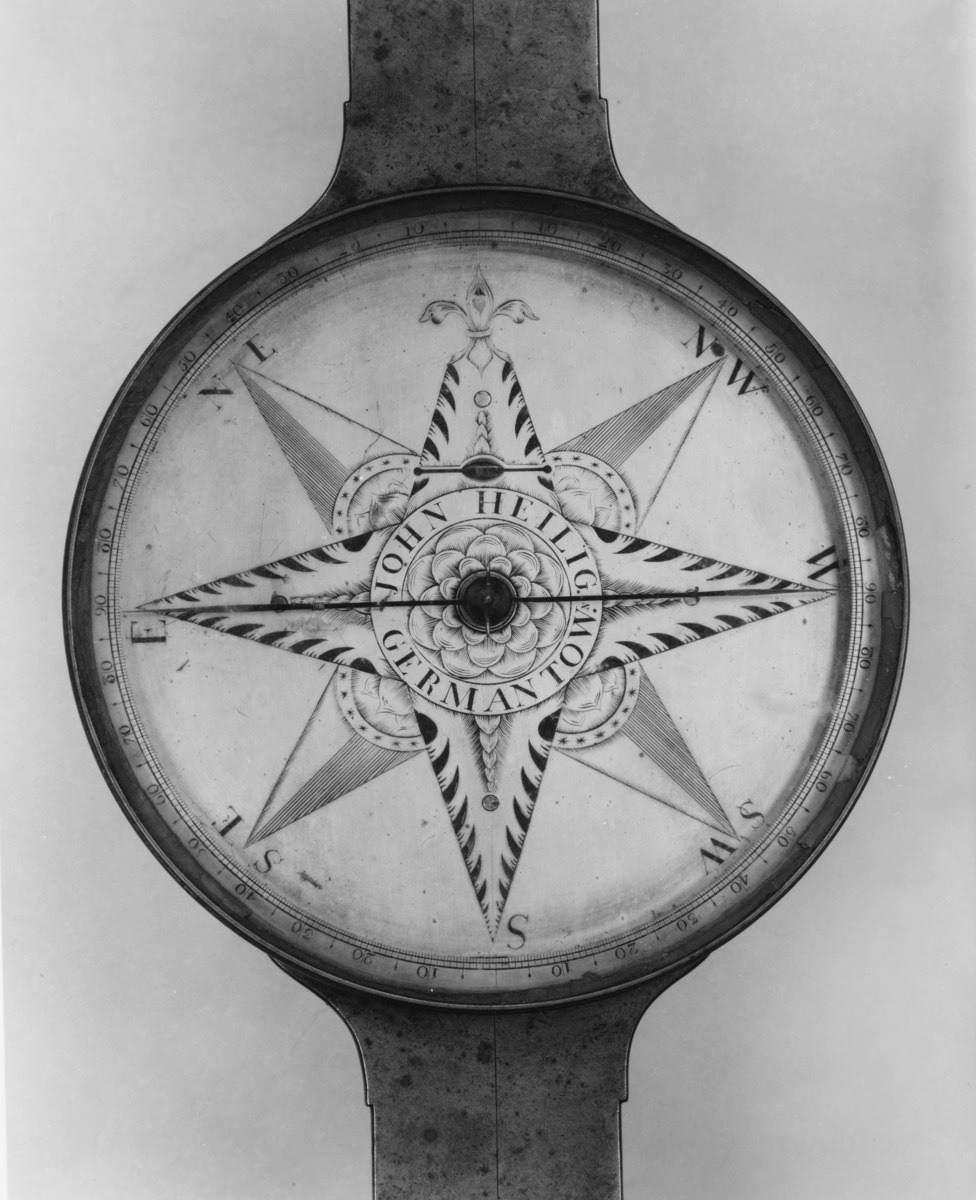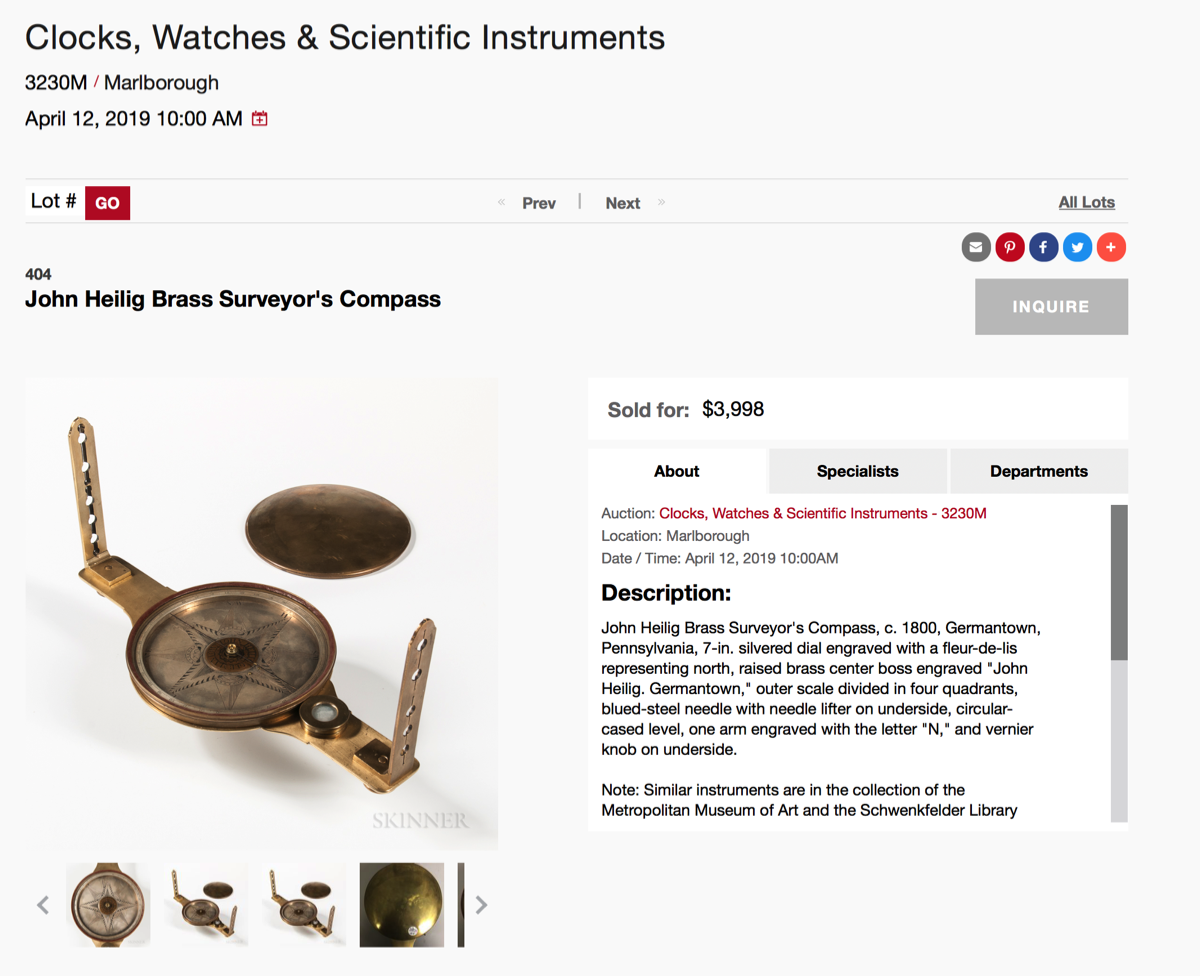
John Heilig
History
JOHN HEILIG (1765 - 1841)
Germantown, Pennsylvania
John Heilig, the grandson of Hendrick Heilig who came from Hanover, Germany in 1720, was born at Germantown March 4, 1765 and died there April 7, 1841. He was buried in St. Michael's Evangelical Lutheran Church Yard on April 9, 1841. In 1841 Germantown was a separate town in Philadelphia County.
Hendrick Heilig was an uncle by marriage to David Rittenhouse. (David's Aunt, Susana Rittenhouse-Heilig, was John Heilig's grandmother).
It is unknown from whom John Heilig received his clockmaking training, but Heilig is listed as an unmarried clockmaker in the Upper Hanover tax records from 1786 to 1793. John Heilig made his first clock as a journeyman clockmaker in 1787.
Based on this timing, I suspect that John Heilig night have learned his clockmaking skills (or at least his compass making skills) from the Rittenhouses prior to 1787. Heilig's approach to making a vernier compass mirrored the Rittenhouses pre-1787 approach, and his compasses otherwise look pretty similar to the Rittenhouses pre-1787 compasses.
John Heilig moved to Germantown in 1796. I've seen online sources saying he moved in 1800, but the better authority seems to be 1796 (and gives an address in Germantown).
John Heilig was a clockmaker and silversmith and was the first silversmith in Germantown.
The NY Metropolitan Museum of Art has a Heilig Plain Compass.
Heilig is probably most famous for a clock he made - a clock commenting George Washington. A bona fide masterpiece with a price tag to match, an 18th century tall-case clock from Germantown, Pa., was a much ballyhooed sale at Baldwin House Antiques of Lancaster, PA. Marked $330,000, the clock, illustrated in Timeless: Masterpieces of American Brass Dial Clocks by Frank Homan, is signed by its maker, John Heilig, and dated 1789. Distinguishing characteristics include a brass dial that is engraved with a portrait of George Washington flanked by drums, cannons and flags.
“The date is a very important feature. Washington was going through Philadelphia for the first inauguration in New York. This clock is certainly commemorative,” said Bruce G. Shoemaker of Baldwin House Antiques. A dove on the clock’s second hand corresponds with the dove weathervane that George Washington ordered from Philadelphia for Mount Vernon in 1787. The clock’s rare mulberry wood case has tulip side windows.
Additional Pictures





© 2020 Russ Uzes/Contact Me